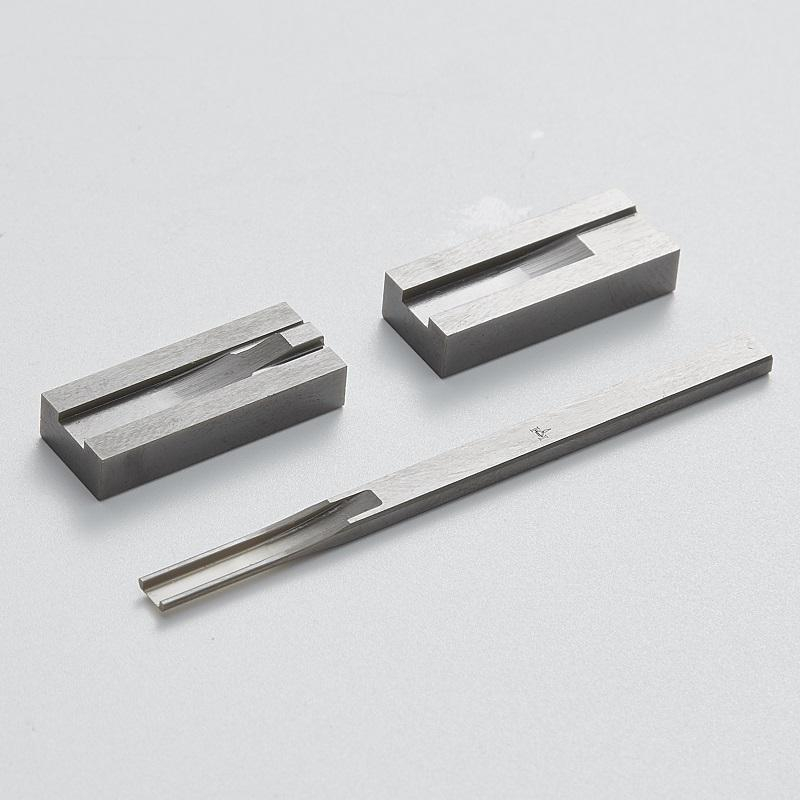Which of the Following Materials Is the Best Choice for Metal Stamping Die?
Jun 27, 2025
In the field of metal stamping, die material selection is pivotal to ensuring long-term stability, tool life, and part quality. Among the most advanced options are tungsten carbide (commonly referred to as tungsten steel) and ceramic materials, both of which offer unique advantages. We compare the two from multiple technical perspectives, including physical properties, processability, and application scenarios, to help determine the best material for your stamping die needs.
Physical Property Comparison: Ceramic vs. Tungsten Carbide
1. Hardness and Wear Resistance
Ceramic materials exhibit exceptional hardness, often exceeding HRA 90, surpassing the typical HRA 80–90 range of tungsten carbide. This makes ceramics particularly suitable for high-speed, fine-feature stamping dies where edge sharpness and longevity are critical. Tungsten carbide, while slightly less hard, still offers sufficient durability for most heavy-duty applications, particularly when impact resistance is needed.
2. Temperature Resistance
Ceramics outperform tungsten carbide in thermal environments. They can maintain structural integrity and hardness at temperatures exceeding 1000°C, making them ideal for high-temperature forming molds. Tungsten carbide, though relatively stable, may lose hardness at elevated temperatures and is more sensitive to thermal fatigue.
3. Chemical Stability and Oxidation Resistance
Ceramics are chemically inert. Their resistance to acids, alkalis, and oxidation allows them to operate in corrosive environments, such as electronic component stamping or chemical processing tools. Tungsten carbide, on the other hand, is more prone to corrosion, especially in wet or chemically aggressive conditions.
4. Density and Inertia
Ceramic’s low density (≈6.07 g/cm³) provides an edge in high-speed applications by minimizing the moving mass, thus reducing mechanical inertia. Tungsten carbide is significantly denser, making it less ideal where weight is a factor in system dynamics.
Machining and Fabrication Considerations
1. Brittleness vs. Toughness
One of the major drawbacks of ceramic is its brittleness. With low fracture toughness (K_IC ≈ 5–8 MPa·m¹/²), ceramic dies are prone to chipping and cracking under high-impact loads. Tungsten carbide, by contrast, offers greater toughness and is better suited to applications like thick sheet punching or operations with frequent dynamic forces.
2. Manufacturing Techniques
Ceramic materials are non-conductive, which prohibits the use of EDM (Electrical Discharge Machining) or wire cutting. Instead, grinding or CNC milling is used, often resulting in longer machining times and limited precision. Tungsten carbide, being conductive, supports a wider range of machining options, allowing for more complex mold designs, including multi-cavity or stepped geometry tools.
3. Cost and Recyclability
Ceramics—especially high-grade imported ones—are costly, often 10 to 20 times more expensive than tungsten carbide. Moreover, ceramic scrap cannot be recycled, increasing material waste. Tungsten carbide, in contrast, is recyclable, which can help reduce lifecycle costs, particularly in mass production environments.
Application Scenarios and Material Selection Guidelines
When selecting the ideal die material, it's essential to evaluate operating conditions, part specifications, and economic constraints.
Choose Ceramic When:
l Ultra-fine precision is required (e.g., surface roughness Ra < 0.1 µm)
l Operating conditions involve high temperature or lubrication-free environments
l Stamping lightweight metals like copper or brass foils (0.05–0.2 mm)
l Long tool life is critical (e.g., over 1 million strokes)
l Electrical insulation is needed (e.g., electronic connector dies)
Choose Tungsten Carbide When:
l The die experiences high-impact force or shock loading (e.g., steel plate blanking)
l Complex die geometries require EDM machining
l Cost is a limiting factor, especially for large-batch production
l Moderate temperature and wear conditions are acceptable
There is no one-size-fits-all answer to the question of which material is superior. The best choice for a metal stamping die depends heavily on your specific application needs:
If your application emphasizes precision, chemical resistance, and thermal stability, ceramics are the preferred option.
For impact-intensive, complex, or cost-sensitive operations, tungsten carbide remains the reliable workhorse.
A well-informed selection between these materials can significantly enhance tool life, part accuracy, and overall production efficiency, ensuring optimal outcomes in modern stamping operations.
